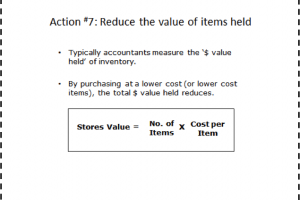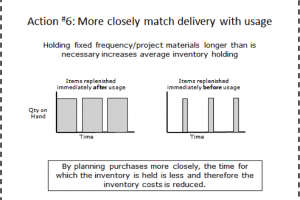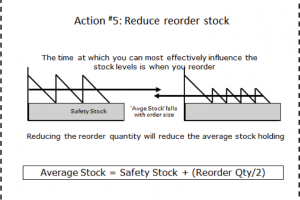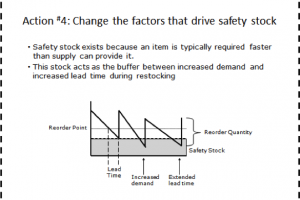Subject Area: Spare Parts Inventory Management Secrets The Reality of Spare Parts Inventory Management One of the little acknowledged issues with spare parts inventory management is that for many companies they really don’t know what they have and/or why they have it. How can that be you ask. Don’t
The Spare Parts Management KPI Self-Delusion
Should any spare parts management metric be treated as a spare parts management KPI? Does your company suffer from the spare parts management KPI delusion? There is an old saying that ‘what is measured, matters’ and while there are some companies that don’t actually measure their performance through spare parts
Isn’t It Time That We Started Talking About Inventory Prevention?
If the goal really is spare parts inventory optimization, then surely doing the work after the parts have been purchased is just wrong. Shouldn’t we be taking action before the parts are purchased? Shouldn’t we be talking about inventory prevention? Spare parts inventory optimization is great. It helps companies
Obsolete Inventory Management – Three Ways to Deal With It
Inventory Doesn’t Just Appear! Have you heard the expression about ‘shutting the gate, when the horse has bolted’? It refers to trying to stop something happening when it has already happened. Seems like a silly thing to do, right? But this
Action #7: Reduce the Value of Spare Parts Items Held
To reduce the value of spare parts items held is the last of the 7 Actions for Inventory Reduction and is probably the most obvious, but perhaps because of that the most overlooked. Most cost reduction actions are aimed at reducing the cost of an item for the obvious profit and
Action #6: Match Spare Parts Delivery With Usage
Each of the actions discussed in this series so far has been looking at ways to reduce the physical number of items held. However, one of the variables that drive the cost of holding inventory is how long you hold the inventory. This represents the amount of time that you
Action #5: Reduce Spare Parts Reorder Quantity
As discussed in other articles in this series, there are essentially two actions that you can take to reduce spare parts inventory: remove existing inventory or reduce the amount of inventory going in. We call this the bathtub principle because it is similar to pulling the plug in a bathtub
Action #4: Change the Factors that Drive Safety Stock
With inventory reduction there are essentially two actions that you can take: remove existing inventory or reduce the amount of inventory going in. We call this the bathtub principle because it is similar to pulling the plug in a bathtub to let water out or closing the faucet to reduce
Action #3: Eliminate Spare Parts Duplication
The first two actions in the Inventory Cash Release Process (Have Someone Else Hold and/or Pay For Inventory and Sell Excess and Obsolete Stock) both involve taking items out of the inventory and this is also the case with Action #3: Eliminate Duplication. Almost by definition, spare parts duplication adds no
Action #2: Sell Excess and Obsolete Inventory
Operationally, excess and obsolete inventory items generate little interest because they do not create emergencies and so few companies pay much attention to this inventory unless or until they undertake a specific program of review. In the normal day-to-day management these inventory items are mostly ignored and the focus tends









